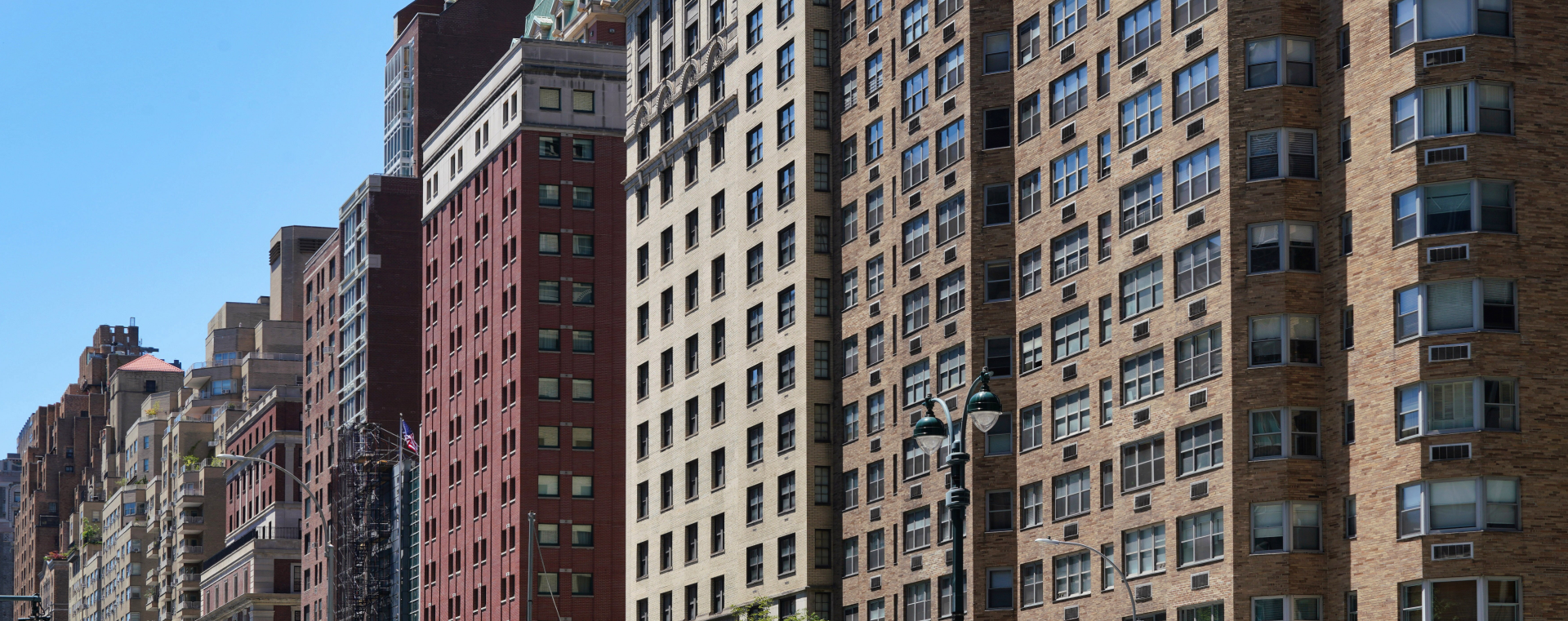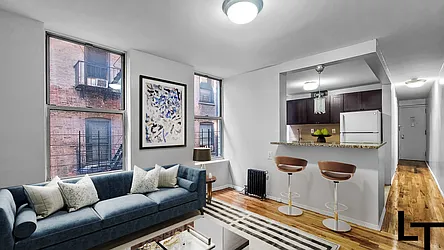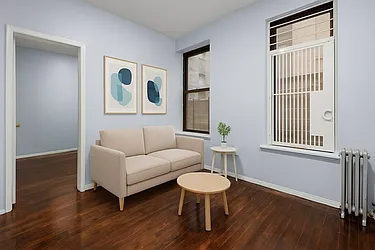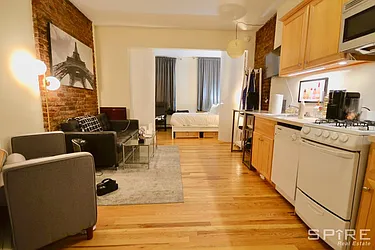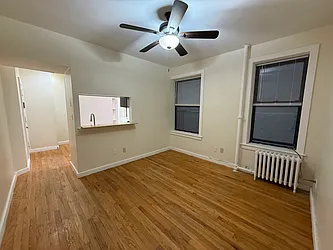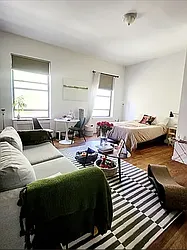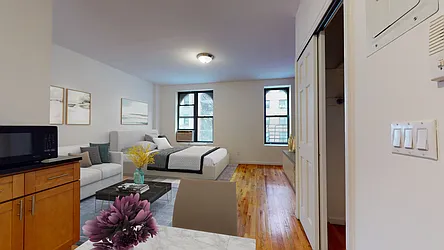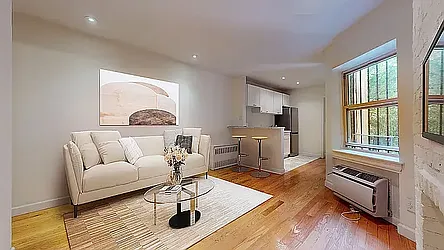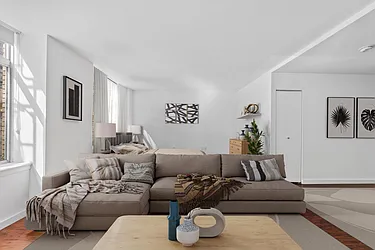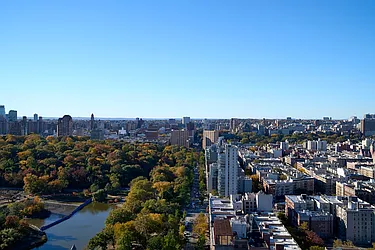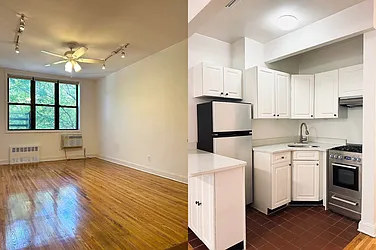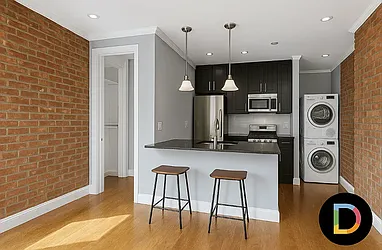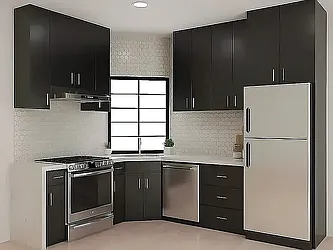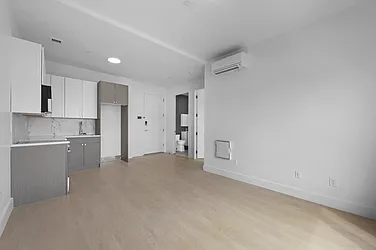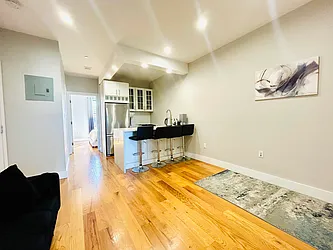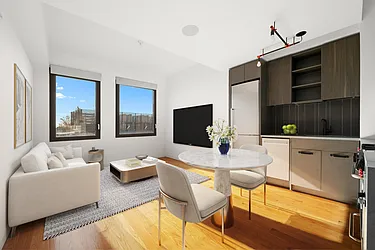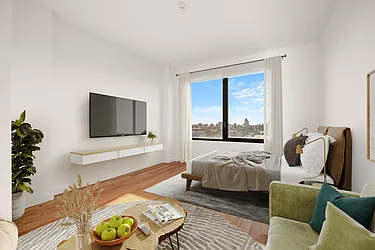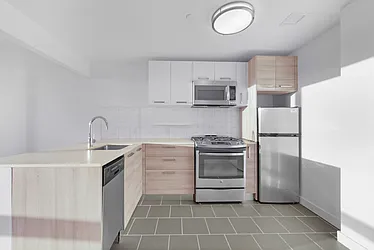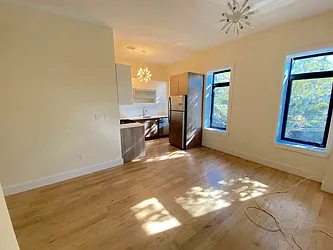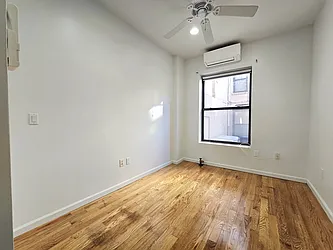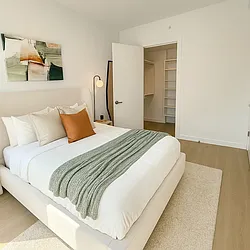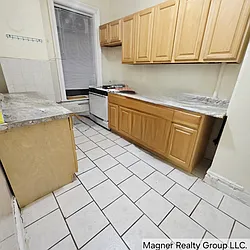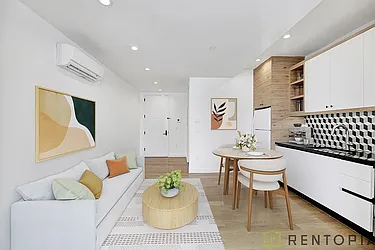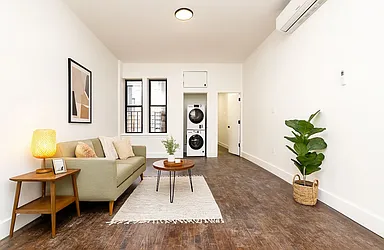Key Takeaways:
- As competition among renters cools, one in five rentals in NYC offered at least one month of free rent as concessions in October — the highest since July 2021.
- Rental inventory is rising in Queens and Brooklyn, but inventory is declining in Manhattan from a year ago.
- The share of amenity-rich rentals hit a record 19%, with significant increases in Brooklyn and the Bronx.
The median asking rent in NYC was $3,676 in October, up 2.1% from a year ago but 2.0% lower than September. The monthly decline in October was slightly more than the typical decline from September to October, which averaged 1.8% between 2017 and 2019 as fewer people tend to move during the colder months. Although asking rents are still rising, the current annual growth rate is slower compared to last year, indicating a calmer market.
As rentals in new developments take up a larger share of the market, the city’s overall rental inventory rose 2.1% year-over-year to 34,061 units in October. Of these rentals, 24.6% were in buildings built after 2010, compared to 20.8% in October of last year. Queens and Brooklyn led in inventory growth, while fewer rentals were on the market in Manhattan.
Affordability challenges, including high upfront costs and elevated rents, continue to dampen renter demand in NYC. Combined with recent increases in inventory, the rental market is more balanced now compared to 2021 and 2022. As competition among renters cools, one in five (19.7%) rentals across the city offered at least one month of free rent as concessions in October — the highest share of concessions since July 2021.
The rising share of listings with concessions in NYC follows a national trend. Across the United States, 37.7% of listings offered concessions in October — the highest share ever according to a Zillow® report. While affordability challenges persist, especially for Gen Z renters, rent growth is cooling across the nation and contributing to modest improvements in affordability.
The ongoing rental inventory growth in NYC is encouraging, but the durability of this trend remains to be seen. Low vacancy rates and dwindling new construction suggest inventory growth in the city will eventually level off. Elevated mortgage rates could keep would-be homebuyers in the rental market and add competitive pressure next year.
Manhattan Rentals Under $3,500 on StreetEasy Article continues below
Median Asking Rents Continued to Rise in All Five Boroughs
The median asking rent in Manhattan rose 2.4% year-over-year to $4,300 in October, led by increases in Downtown and Upper Manhattan neighborhoods. The median asking rent across Downtown neighborhoods was $4,944 in October, up 4.1% from a year ago. In Upper Manhattan, which traditionally offers rentals at lower prices than the rest of the borough, the median asking rent rose 3.4% year-over-year to $2,895.
In Brooklyn, the median asking rent increased 2.9% year-over-year to $3,499 in October. Northwest Brooklyn continued to see strong increases in asking rents, led by DUMBO, Downtown Brooklyn, and Gowanus, which have higher concentrations of more expensive modern buildings with sought-after amenities. The median asking rent in this submarket was $4,400 in October, up 4.0% from a year ago.
Following a year of sustained renter demand in Queens that led to sharp increases in asking rents, rent growth in the borough has finally started to moderate. The median asking rent in Queens was $3,000 in October, up 3.4% from a year ago. The five Queens neighborhoods with the largest annual growth in asking rents were Forest Hills (11.8%), Jamaica (5.5%), Astoria (1.8%), Long Island City (1.2%), and Woodside (0.8%).
NYC Neighborhoods With Sharpest Annual Growth in Median Asking Rent
| Neighborhood | Median Asking Rent (October 2024) | Y-o-Y Change |
|---|---|---|
| Greenwich Village | $5,600 | 12.1% |
| Forest Hills | $2,795 | 11.8% |
| Soho | $8,000 | 9.6% |
| Flatiron | $6,375 | 9.0% |
| DUMBO | $6,198 | 6.9% |
NYC Neighborhoods With Sharpest Annual Declines in Median Asking Rent
| Neighborhood | Median Asking Rent (October 2024) | Y-o-Y Change |
|---|---|---|
| Prospect Lefferts Gardens | $2,850 | -5.0% |
| Bay Ridge | $2,300 | -4.2% |
| Midtown | $4,895 | -3.6% |
| Upper East Side | $3,908 | -2.3% |
| Hamilton Heights | $2,750 | -1.8% |
Inventory Is Declining in Manhattan While Brooklyn and Queens Fill the Gap
Rental inventory is declining in Manhattan due to fewer new listings entering the market. While Manhattan led the city in total inventory with 15,885 rentals on the market, the current number of rentals available in Manhattan is 8.6% lower than last year. This decline in inventory in the borough is keeping the market stable amid cooling renter demand. In October, 19.8% of Manhattan rentals offered concessions, relatively unchanged from 19.5% last year.
Meanwhile, rental inventory is swelling in Queens and Brooklyn thanks to increases in new developments joining the market, contributing to the rise in citywide total inventory despite Manhattan’s declines. Brooklyn’s rental inventory jumped 13.5% year-over-year to 12,160 units in October, while Queens had 4,888 rentals, a 14.5% increase from a year ago.
As rising inventory gives renters more options to consider, concessions have become more common in Queens and Brooklyn compared to a year ago. In Queens, 19.5% of rentals offered at least one month of free rent in October, higher than 14.4% a year ago. Similarly in Brooklyn, the share of rentals with concessions rose to 19.2% from 15.4% last year.
There were 1,067 rentals in the Bronx in October, a 10.2% jump from a year ago, with a median asking rent of $2,900. StreetEasy® analysis of NYC data shows the Bronx has been leading the city in affordable rental supply. The surge in new developments in the borough has expanded both market-rate and affordable options for New Yorkers in recent years. The Bronx saw 9,842 new homes created last year, and among these new homes, 5,335 were affordable income-restricted rental units serving low- to middle-income households — more than any other borough in NYC.
Brooklyn Rentals Under $3,000 on StreetEasy Article continues below
Nearly 1 in 5 Rentals in NYC Were in Amenity-Rich Buildings
The share of amenity-rich rentals among NYC’s inventory rose to a record high of 18.9% in October, as new developments rose across the city to meet housing demand. NYC Department of City Planning data shows 27,980 housing units were created last year, an 8% increase from 2022. Limited vacancies in rental buildings across NYC suggest new developments will play a bigger role in expanding the city’s rental inventory. The median asking rent of amenity-rich rentals in October was $4,296.
In October, 6,435 rentals were available in amenity-rich buildings, up 16.3% from a year ago. These rentals all offer in-unit laundry, a dishwasher, an elevator, and a doorman — the top four must-have amenities in NYC, based on StreetEasy search data — in addition to a fitness center and/or pool in the building.
While Manhattan remains the largest market for amenity-rich rentals with 2,937 total units, Brooklyn continued to see strong increases in such inventory. In October, 2,232 amenity-rich units were on the market in Brooklyn, surging 52.3% from a year ago. Within the borough, Williamsburg and Downtown Brooklyn remain the largest amenity-rich rental markets, but DUMBO is quickly catching up, thanks to the increase in new developments opening in the neighborhood this year.
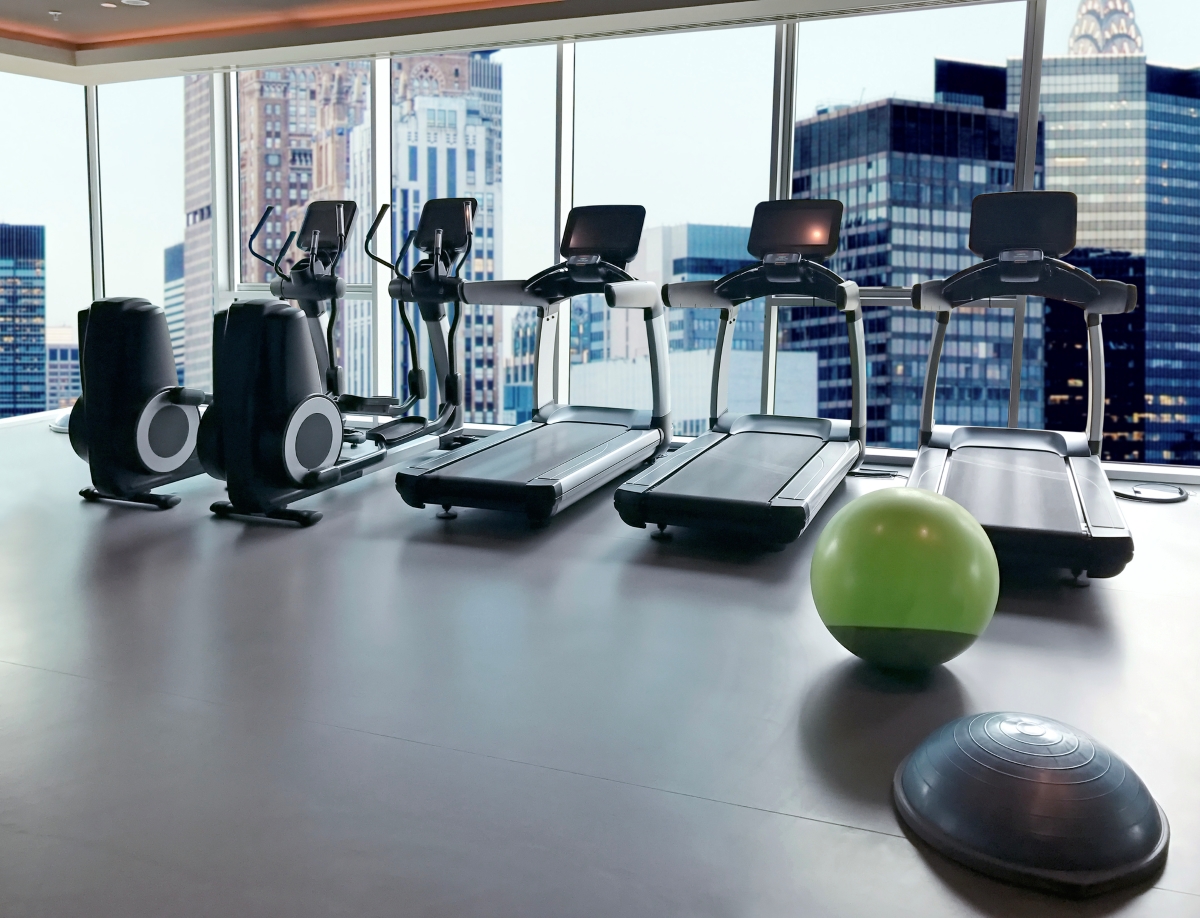
Meanwhile, the Bronx had just 300 amenity-rich units. While a much smaller pool of inventory compared to Manhattan and Brooklyn, this marks an 81.8% increase in the Bronx’s amenity-rich rentals from a year ago, following a series of targeted rezonings over the past two decades that has led to a spike in new development in the borough.
As amenity-rich inventory rises, concessions are spreading even more rapidly in this market segment: 41.5% of amenity-rich rentals offered at least one month of free rent in October, a sharp increase from 35.7% the previous year. The median net-effective rent — a calculation that distributes the discount from free months of rent across all other non-free months of a lease — of amenity-rich rentals fell 3.1% to $4,296.
What Renters Can Expect This Year and Next
As the colder weather sets in, competition among renters will continue to ease in NYC and asking rents will decline even further from their summertime peak of $3,829. Slower competition this fall and winter will allow renters to take additional time for their search, and potentially negotiate better terms on their lease.
Despite slowing rent growth, rising concessions, and softening competition, the decades-long housing shortage in NYC continues to burden the city’s renters — especially young adults. New York City remains one of the nation’s most unaffordable rental markets, with two in three Gen Z renters being rent-burdened, StreetEasy analysis of the U.S. Census Bureau’s American Community Survey (ACS) microdata shows.
Furthermore, the upfront costs of acquiring a rental add up, and the burden on young adults in their early careers is heavier. In New York City, upfront costs to move into an apartment averaged almost $10,500 last year, with broker fees often being the largest expense. This is equivalent to 17% of the median household income of NYC’s Gen Z renters, which was $63,257 in 2022, according to our analysis.
However, the recent passage of the Fairness in Apartment Rental Expenses (FARE) Act by the New York City Council on November 13 will likely offer some relief for renters next year in the way of reduced upfront costs. The FARE Act will ensure agents are compensated by the party that hires them and require rental listings to disclose any fees to be paid by tenants, helping renters better understand what they can afford and giving them true choice in agent representation. While not a silver bullet to NYC’s housing affordability crisis, the new law will have a meaningful impact for the two-thirds of New Yorkers who rent. By significantly reducing upfront costs and easing the lock-in effect on renters — who may have wanted to move, but have been unable to do so due to this burdensome fee — it will help lower the financial barriers to housing. As more units become available next year, agents will see more opportunities to work with both landlords and tenants to help New Yorkers unlock their next home.
StreetEasy is an assumed name of Zillow, Inc. which has a real estate brokerage license in all 50 states and D.C. See real estate licenses. StreetEasy does not intend to interfere with any agency agreement you may have with a real estate professional or solicit your business if you are already under contract to purchase or sell property. All data for uncited sources in this presentation has been sourced from Zillow data. Copyright © 2024 by Zillow, Inc. and/or its affiliates. All rights reserved.
